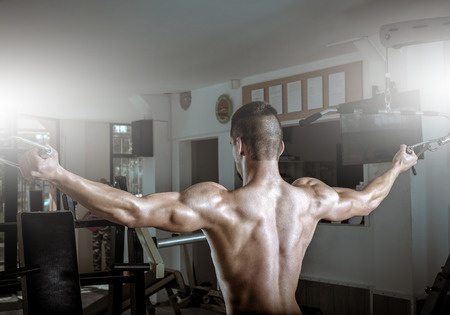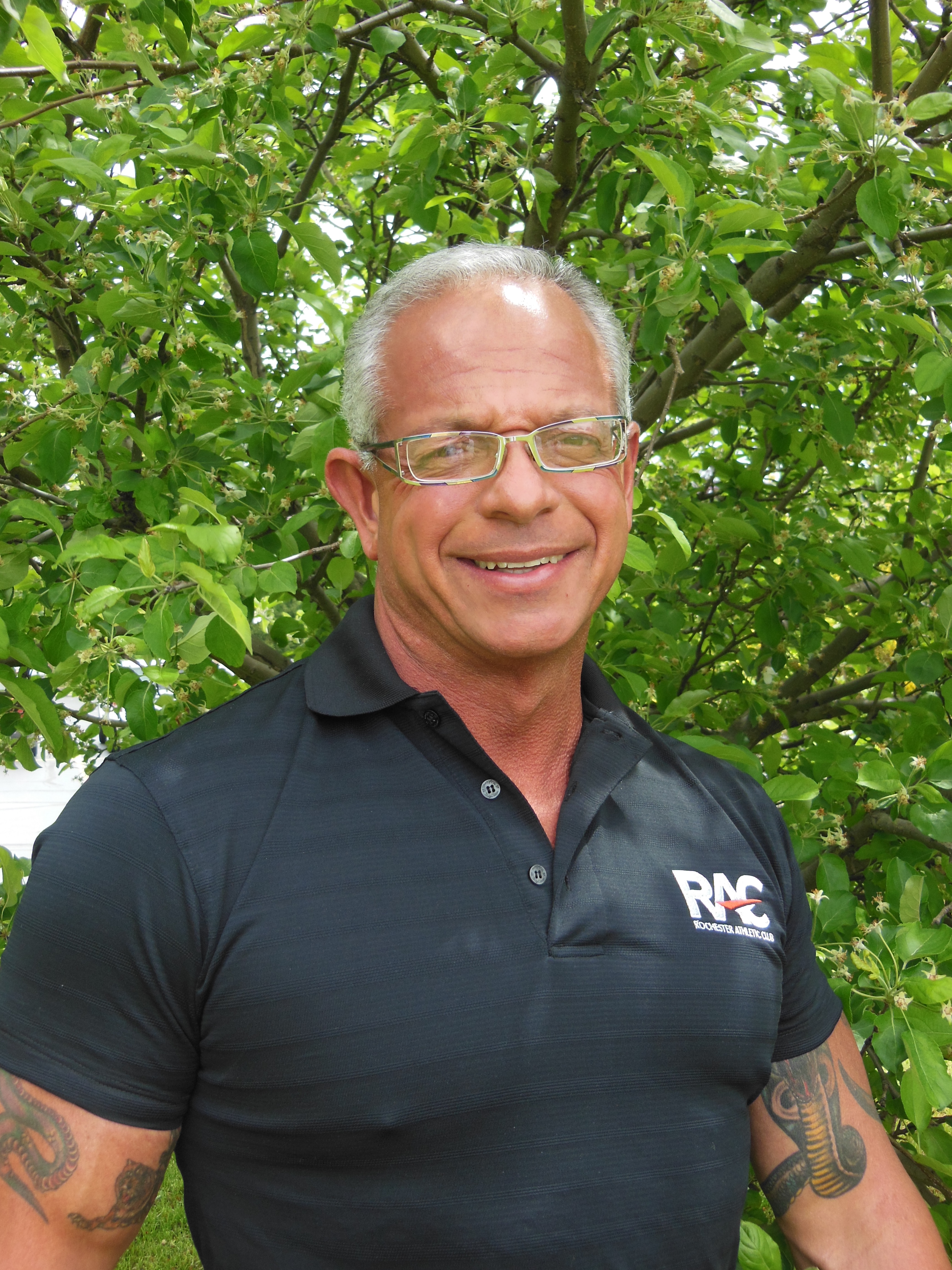Emphasis
The primary muscles stressed in this movement are the chest muscles (pectoralis major and minor). The secondary muscles are the shoulders and triceps.
Starting Position
Place the pulleys of the cable machine slightly higher than your chest. Grab the handles of the two pulleys with a pronated grip (palms down). Step forward approximately two feet in front of the pulleys. Lean forward to a position where the cables are in line with your chest muscles. Push your chest out and squeeze your shoulder blades together. This will help to isolate your chest muscles. Place your feet with one foot in front of the other. Pull the handles down to a position where your elbows are in line with your shoulders, keeping a slight bend in your elbows.
Movement
Push your arms down and in until your hands are extended out in front of you about one inch apart. Contract your chest muscles hard during this movement. Keeping a slight bend in your elbows, take two to three seconds to return your arms to the starting position.
Training Tips
- To get the most out of this movement slightly cross your hands in front of you without over extending your shoulders.
Options
- By varying the angle of your upper body to the floor you can target different sections of the chest (upper, lower or middle).
Warning Tips
- Do not overextend your shoulders when pulling your arms down. Failure to do so can result in serious injury to your shoulders.
- Do not return your arms to the starting position any faster than two to three seconds. You must be in control at all times during this movement. The faster you perform this movement, the less control you will have, which in turn will increase your risk of injury.
 Robert Bovee Certified Master PPT, RTS, ETS, FTS
Robert Bovee Certified Master PPT, RTS, ETS, FTS
As one of the most successful Professional Personal Trainers and Exercise/Fitness Therapists in the United States, Robert continues to remain at the forefront of the industry by providing his clients with a thorough education and the tools to implement that education. By improving his client’s physical health, strength, endurance, cardiovascular fitness and nutritional habits, he is able to motivate them to lead longer, happier and more productive lives. Find out more about Robert and his personal training career and services, here.
Guest authors offer experience and educational insights based on their specific area of expertise. These authors are contributing writers for the NFPT blog because they have valuable information to share with NFPT-CPTs and the fitness community at-large. If you are interested in contributing to the NFPT blog as a guest, please send us a note expressing your interest and tell us how you can contribute valuable insights to our readers. We look forward to hearing from you! Send to editor@nfpt.com

